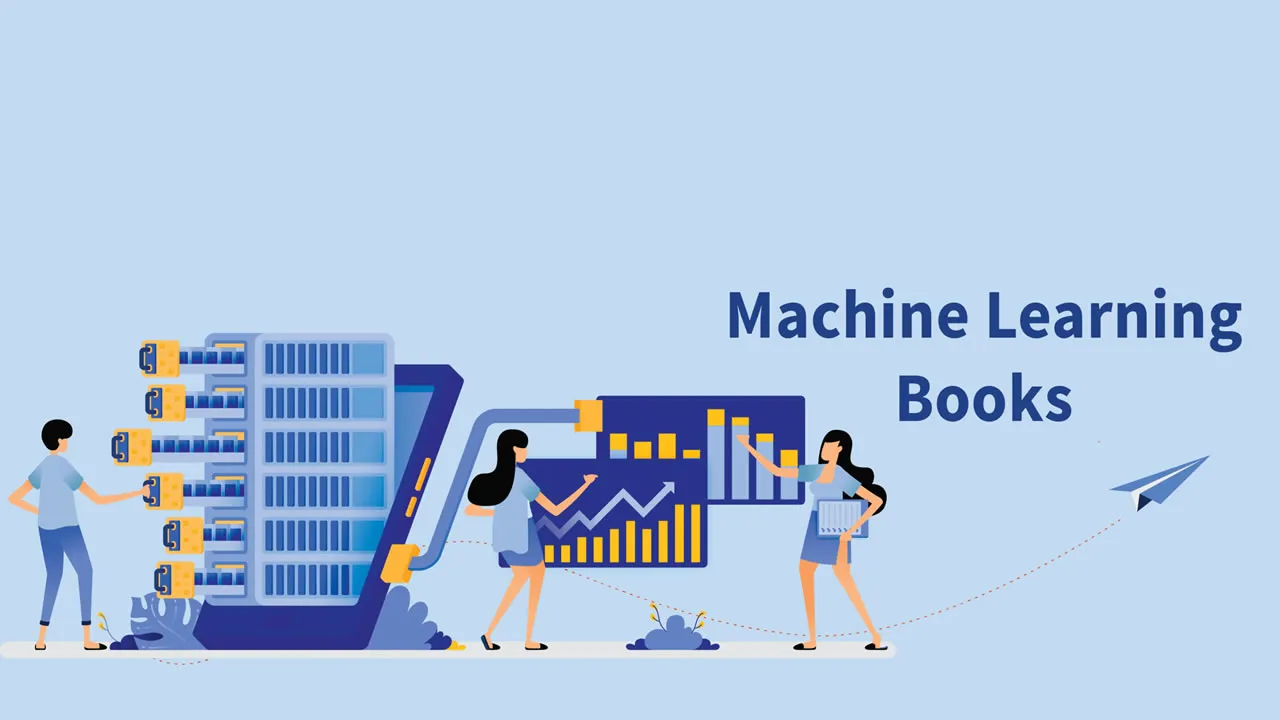11+ Best Machine Learning Books for Beginners and Pros
Learn machine learning from scratch to advanced with the top 11+ books for beginners and pros, covering everything from the fundamentals to cutting-edge techniques. Whether you're a beginner or a seasoned pro, you're sure to find a book on this list that's perfect for you.
📔 Best Python Books: https://bit.ly/3REqgBm
Machine Learning Books for Beginners
1. The Hundred-Page Machine Learning Book

Author(s) – Andriy Burkov
Pages – 160
Latest Edition – First Edition
Publisher – Andriy Burkov
Format – Kindle/Hardcover/Paperback
Why we chose this book
Is it possible to learn machine learning in only 100 pages? This beginner's book for Machine Learning uses an easy-to-comprehend approach to help you learn how to build complex AI systems, pass ML interviews, and more.
This is an ideal book if you want a concise guide for machine learning that succinctly covers key concepts like supervised & unsupervised learning, deep learning, overfitting, and even essential math topics like linear algebra, probably, and stats.
Features
- Fundamental ML concepts, including evaluation & overfitting
- Supervised learning via linear regression, logistic regression, & random forests
- Unsupervised Learning via clustering & dimensionality reduction
- Deep Learning via neural networks (NN)
- Essential math topics like linear algebra, optimization, probability and statistics
2. Machine Learning for Absolute Beginners: A Plain English Introduction
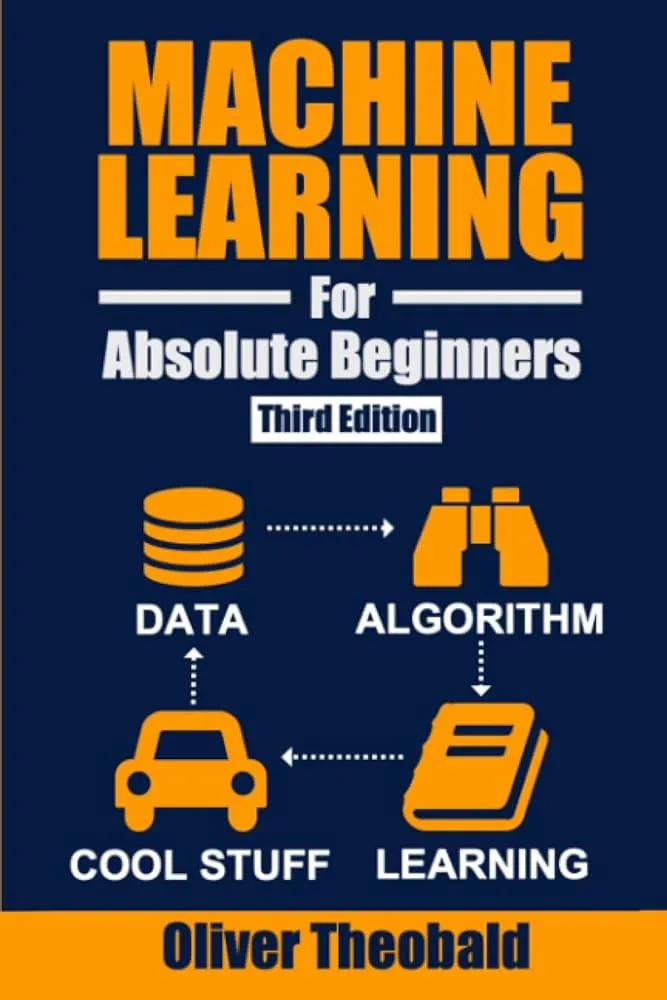
Author(s) – Oliver Theobald
Pages – 179
Latest Edition – Third Edition
Publisher – Scatterplot Press
Format – Kindle/Paperback/Hardcover
Why we chose this book
If you’re interested in learning machine learning but have no prior experience, this book is ideal for you, as it doesn’t assume prior knowledge, coding skills, or math.
With this book, you’ll learn the basic concepts and definitions of ML, types of machine learning models (supervised, unsupervised, deep learning), data analysis and preprocessing, and how to implement these with popular machine learning libraries like scikit-learn, NumPy, Pandas, Matplotlib, Seaborn, and TensorFlow.
Features
- Intro to Python programming language and to use with machine learning
- Basics of deep learning and Neural Networks (NN)
- Covers clustering and supervised/unsupervised algorithms
- Python ML Libraries, including scikit-learn, NumPy, Pandas, and Tensorflow
- The theory behind feature engineering and how to approach it
3. Machine Learning for Dummies
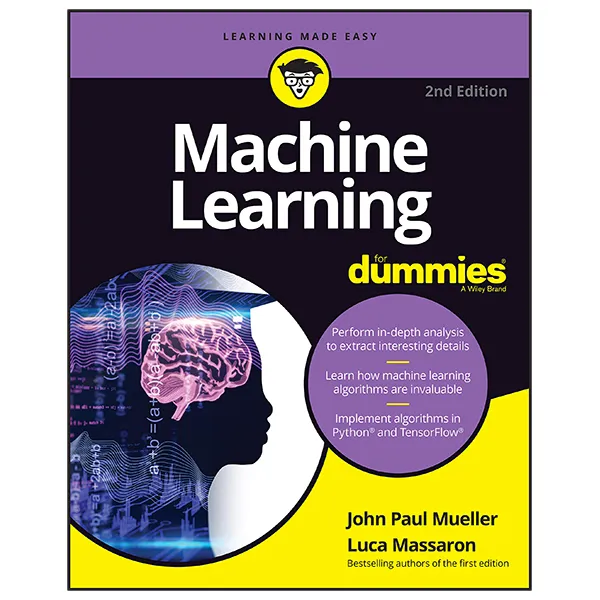
Author(s) – John Paul Mueller and Luca Massaron
Pages – 464
Latest Edition – Second Edition
Publisher – For Dummies
Format – Kindle/Paperback
Why we chose this book
This book aims to make the reader familiar with the basic concepts and theories of machine learning in an easy way (hence the name!). It also focuses on practical and real-world applications of machine learning.
This book will teach you underlying math principles and algorithms to help you build practical machine learning models. You’ll also learn the history of AI and ML and work with Python, R, and TensorFlow to build and test your own models. You’ll also use up-to-date datasets and learn best practices by example.
Features
- Tools and techniques for cleaning, exploring, and preprocessing data
- Unsupervised, supervised, and deep learning methods
- Evaluating model performance with accuracy, precision, recall, and F1 score
- Best practices and tips for feature selection, model selection, and avoiding overfitting
4. Introduction to Machine Learning with Python: A Guide for Data Scientists
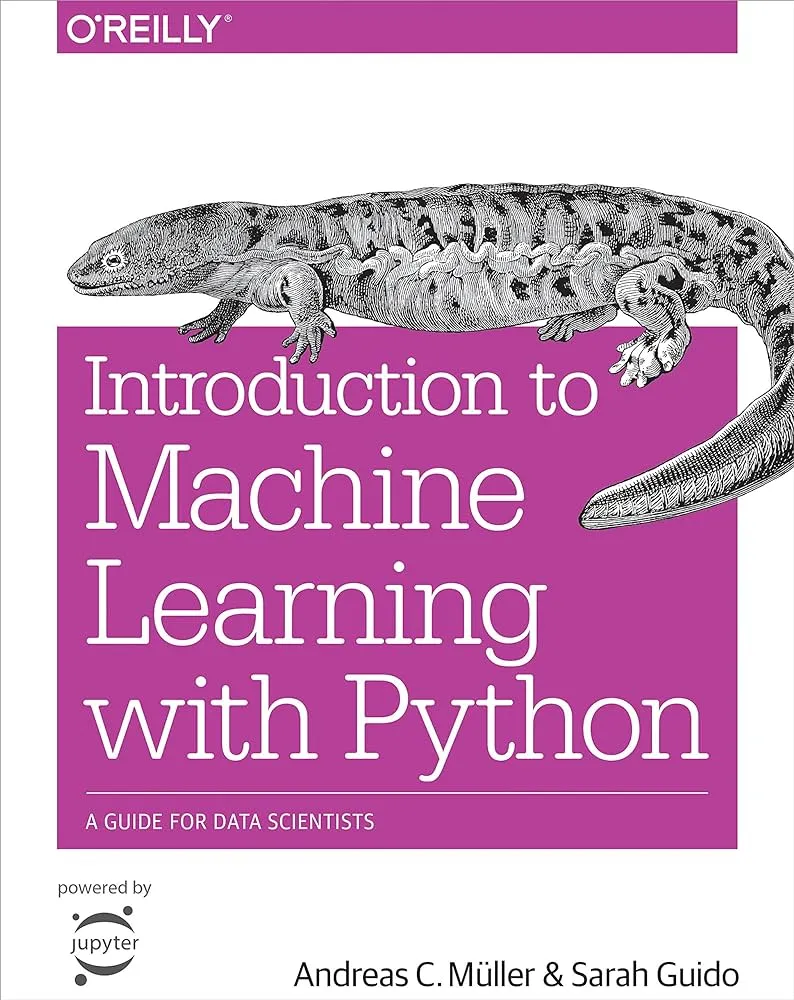
Author(s) – Andreas C. Müller & Sarah Guido
Pages – 392
Latest Edition – First Edition
Publisher – O’Reilly Media
Format – Kindle/Paperback
Why we chose this book
This book is a practical guide for beginners to learn how to create machine learning solutions as it focuses on the practical aspects of machine learning algorithms with Python and scikit-learn.
The authors don’t focus on the math behind algorithms but rather on their applications and fundamental concepts. It also covers popular machine learning algorithms, data representation, and more, making this a great resource for anyone looking to improve their machine learning and data science skills.
Features
- Covers the basic concepts and definitions of machine learning
- Addresses supervised, unsupervised, and deep learning models
- Includes techniques for representing data
- Includes text processing techniques and natural language processing
5. Hands-On Machine Learning with Scikit-Learn, Keras, and TensorFlow: Concepts, Tools, and Techniques to Build Intelligent Systems

Author(s) – Aurélien Géron
Pages – 861
Latest Edition – Third Edition
Publisher – O’Reilly Media
Format – Kindle/Paperback
Why we chose this book
This book is ideal for learning the popular machine learning libraries, Keras, Scikit-Learn, and TensorFlow.
Being an intermediate-level book, you’ll need Python coding experience, but you’ll then be able to complete a range of well-designed exercises to practice and apply the skills you learn.
Features
- How to construct and train deep neural networks
- Covers deep reinforcement learning
- Learn to use linear regression and logistic regression
6. Understanding Machine Learning
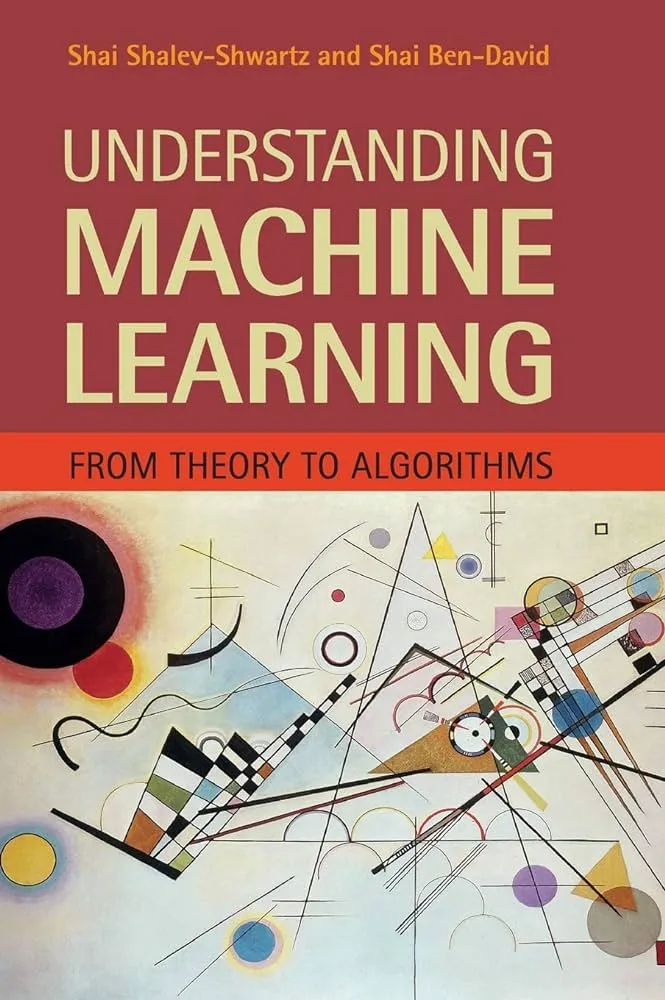
Author(s) – Shai Shalev-Shwartz and Shai Ben-David
Pages – 410
Latest Edition – First Edition
Publisher – Cambridge University Press
Format – Hardcover/Kindle/Paperback
Why we chose this book
This book offers a structured introduction to machine learning by diving into the fundamental theories, algorithmic paradigms, and mathematical derivations of machine learning.
It also covers a range of machine learning topics in a clear and easy-to-understand manner, making it good for anyone from computer science students to others from fields like engineering, math, and statistics.
Features
- Covers the computational complexity of various ML algorithms
- Covers convexity and stability of ML algorithms
- Learn to construct and train neural networks
7. AI and Machine Learning for Coders: A Programmer's Guide to Artificial Intelligence

Author(s) – Laurence Moroney
Pages – 390
Latest Edition – First Edition
Publisher – O’Reilly Media
Format – Kindle/Paperback
Why we chose this book
This machine learning book is aimed at programmers who want to learn about artificial intelligence (AI) and ML concepts like supervised and unsupervised learning, deep learning, neural networks, and practical implementations of ML techniques with Python and TensorFlow.
This book also covers the theoretical and practical aspects of AI and ML, along with the latest trends in the field. Overall, it’s a comprehensive resource for programmers who want to implement ML in their own projects.
Features
- Covers how to build models with TensorFlow
- Learn about supervised and unsupervised learning, deep learning, and neural networks
- Covers best practices for running models in the cloud
8. Machine Learning with PyTorch and Scikit-Learn: Develop machine learning and deep learning models with Python

Author(s) – Sebastian Raschka, Yuxi (Hayden) Liu, Vahid Mirjalili
Pages – 774
Latest Edition – First Edition
Publisher – Packt Publishing
Format – Kindle/Paperback
Why we chose this book
This PyTorch book is a comprehensive guide to machine learning and deep learning, providing both tutorial and reference materials. It dives into essential techniques with detailed explanations, illustrations, and examples, including concepts like graph neural networks and large-scale transformers for NLP.
This book is mostly aimed at developers and data scientists who have a solid understanding of Python but want to learn about machine learning and deep learning with Scikit-learn and PyTorch.
Features
- Learn PyTorch and scikit-learn for machine learning and deep learning
- Covers how to train machine learning classifiers on different data types
- Best practices for preprocessing and cleaning data
Advanced Machine Learning Books
9. The Elements of Statistical Learning: Data Mining, Inference, and Prediction
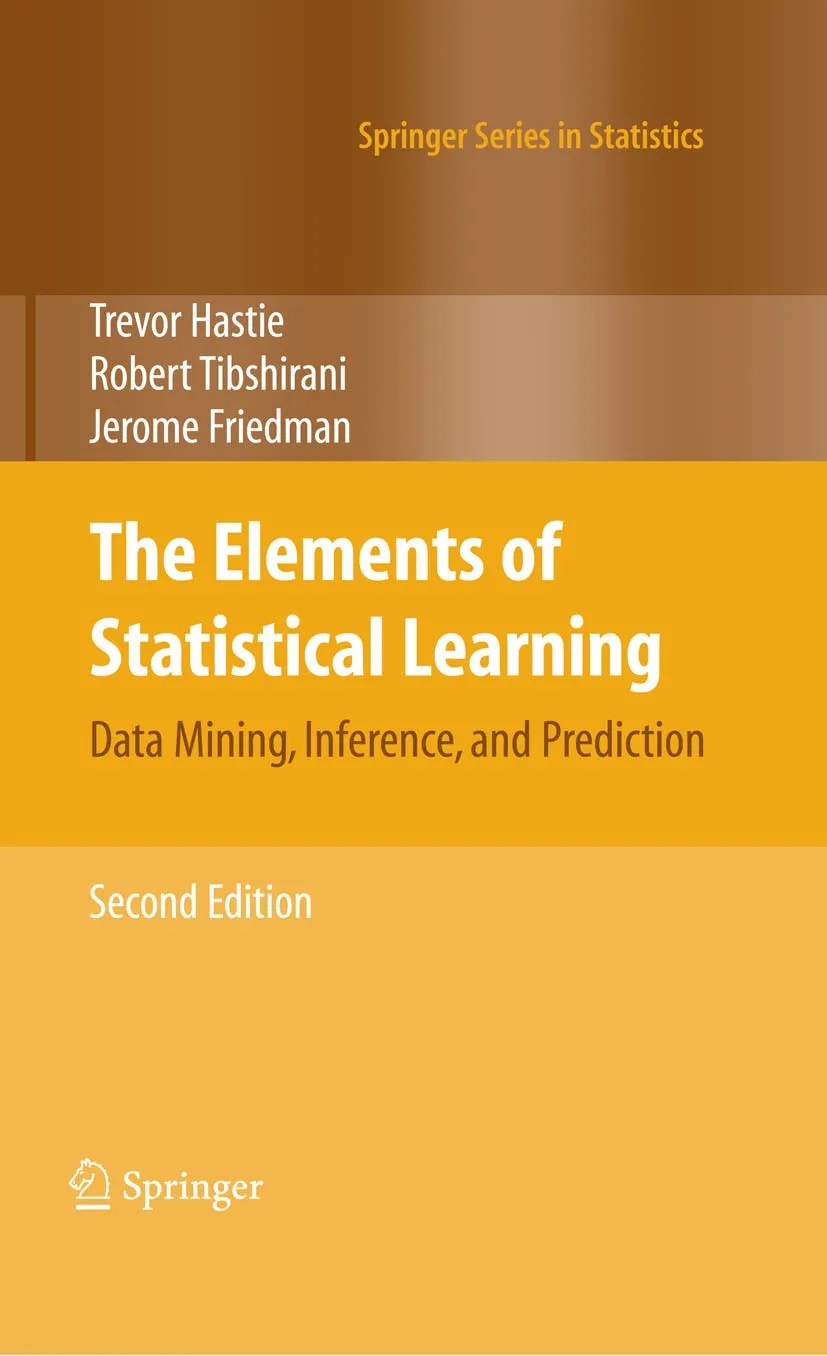
Author(s) – Trevor Hastie, Robert Tibshirani, and Jerome Friedman
Pages – 767
Latest Edition – Second Edition
Publisher – Springer
Format – Hardcover/Kindle
Why we chose this book
If you want to learn machine learning from the perspective of stats, this is a must-read, as it emphasizes mathematical derivations for the underlying logic of an ML algorithm. Although you should probably check you have a basic understanding of linear algebra to get the most from this book.
Some of the concepts covered here are a little challenging for beginners, but the author handles them in an easily digestible manner, making it a solid choice for anyone that wants to understand ML under the hood!
Features
- Covers feature selection and dimensionality reduction
- Learn about logistic regression, linear discriminant analysis, and linear regression
- Dives into neural networks and random forests
10. Pattern Recognition and Machine Learning
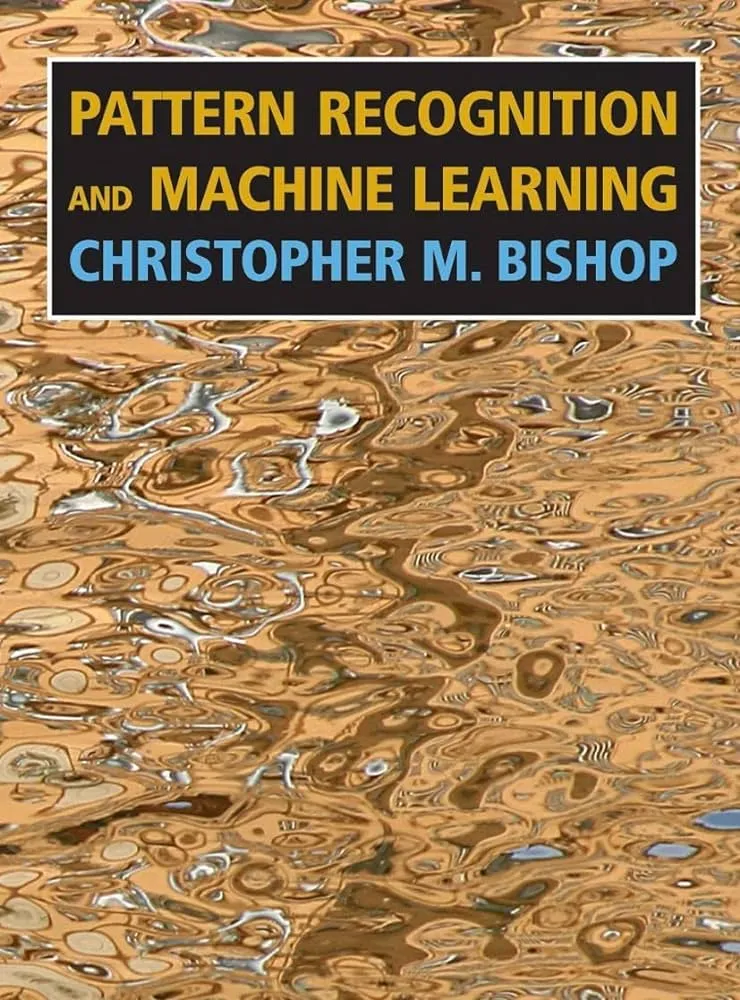
Author(s) – Christopher M. Bishop
Pages – 738
Latest Edition – Second Edition
Publisher – Springer
Format – Hardcover/Kindle/Paperback
Why we chose this book
This is a great choice for understanding and using statistical techniques in machine learning and pattern recognition, meaning you’ll need a solid grasp of linear algebra and multivariate calculus.
The book also includes detailed practice exercises to help introduce statistical pattern recognition and a unique use of graphical models to describe probability distributions.
Features
- Learn techniques for approximating solutions for complex probability distributions
- Covers Bayesian methods and probability theory
- Covers supervised and unsupervised learning, linear and non-linear models, and SVM
11. Designing Machine Learning Systems: An Iterative Process for Production-Ready Applications

Author(s) – Chip Huyen
Pages – 386
Latest Edition – First Edition
Publisher –O’Reilly Media
Format – Kindle/Paperback/Leatherbound
Why we chose this book
This is a comprehensive guide to designing production-ready machine learning systems, making it ideal for developers that need to run ML models right away.
To help you get up to speed quickly, this book includes a step-by-step process for designing ML systems, including best practices, real-world examples, case studies, and code snippets.
Features
- Covers data cleaning, feature selection, and performance evaluation
- Learn to quickly detect and address model issues in production
- Covers how to design a scalable and robust ML infrastructure
12. Machine Learning: A Probabilistic Perspective (Adaptive Computation and Machine Learning series)
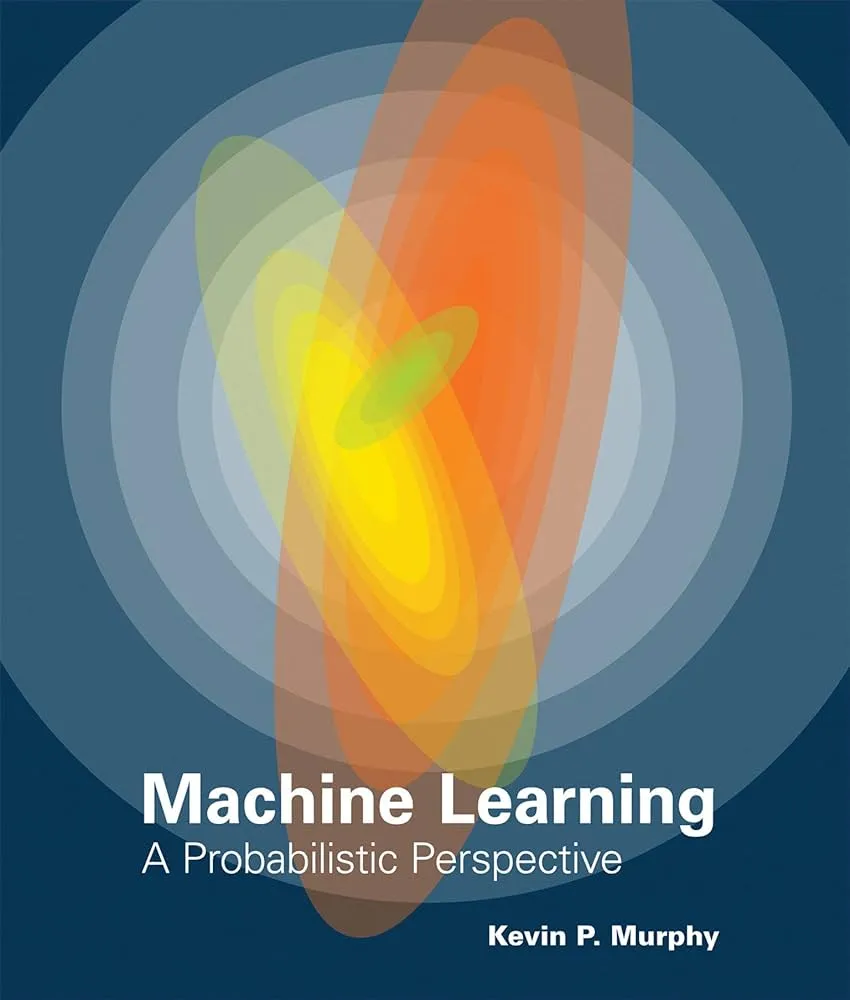
Author(s) – Kevin P. Murphy
Pages – 1096
Latest Edition – First Edition
Publisher – The MIT Press
Format – eTextbook/Hardcover
Why we chose this book
This machine learning book is written in an informal style with a combination of pseudocode algorithms and colorful images.
It also emphasizes a model-based approach, and unlike many other machine learning books, it doesn’t rely on heuristic methods but rather it uses real-world examples from various domains.
Features
- Learn techniques for understanding and implementing conditional random fields
- Covers image segmentation, natural language processing, and speech recognition
- Utilizes Python, Keras, and TensorFlow
13. Bayesian Reasoning and Machine Learning
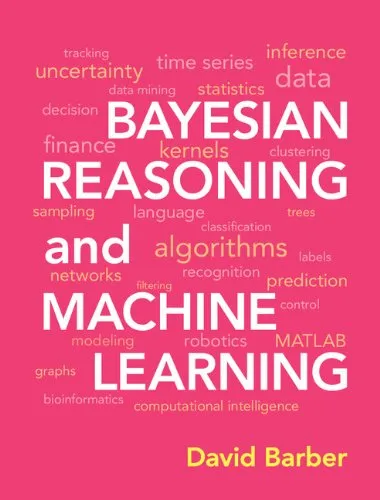
Author(s) – David Barber
Pages – 735
Latest Edition – First Edition
Publisher – Cambridge University Press
Format – Kindle/Hardcover/Paperback
Why we chose this book
This is a comprehensive machine-learning guide that covers everything from basic reasoning to advanced techniques within the framework of graphical models. It includes multiple examples and exercises to help students develop their analytical and problem-solving skills.
It’s also an ideal textbook for final-year undergraduate and graduate students studying machine learning and graphical models. It also offers additional resources like a MATLAB toolbox for students and instructors.
Features
- Covers basic graph concepts like Spanning trees and adjacency matrices
- Learn various graphical models like Markov Networks and Factor Graphs
- Provides an overview of statistics for machine learning
Final Thoughts
And there you go, the 13 best machine learning books to read, with a range of machine learning books for beginners and experienced professionals.
As we continue to see an exponential expansion of data generation, machine learning continues to be in high demand by organizations that want to extract value from their datasets.
By taking the time to review our recommended machine learning books, you should be able to find a range of machine learning books that align with your career goals and preferred learning style.
Whichever book you choose, we wish you luck as you continue your journey into the world of machine learning.
Happy reading!
#python #datascience #machinelearning #deeplearning #ai #artificialintelligence #programming #developer #morioh #softwaredeveloper #computerscience
